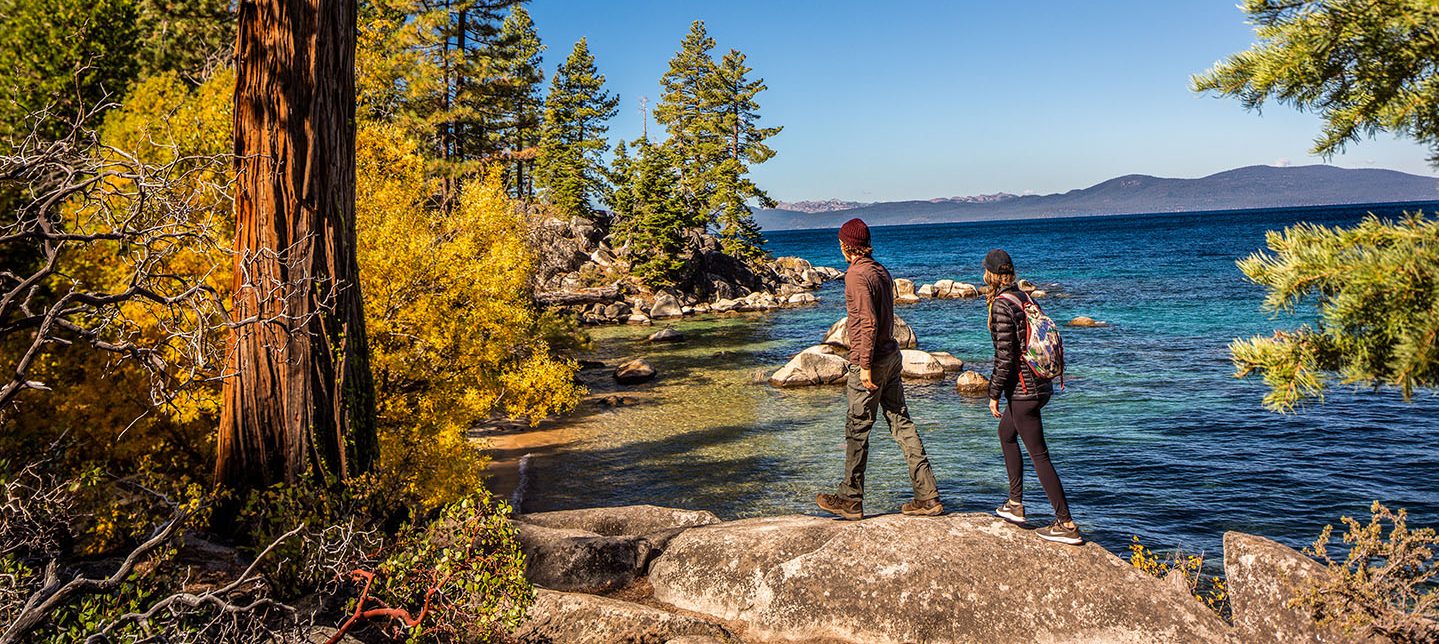While much of the fanfare relating to Lake Tahoe’s hiking trails justifiably centers on the scenic beauty of the West Shore, where the oft-photographed Emerald Bay and trails that crisscross through Desolation Wilderness attract scores of recreational hikers, the East Shore offers its fair share of quality routes.
The East Shore also boasts a trove of secluded, hidden beaches, meaning those willing to put in the exertion will earn the right to relax on a beach with an expansive view of Tahoe’s inimitable blue, unburdened by the bustle of the crowds that come to North America’s largest alpine lake in the summer months.
Not the least of these beaches is Skunk Harbor, on the southern end of the East Shore. The secluded beach and azure harbor represent the terminal of a 1.5-mile hike, meaning the total terrain covered for those willing to put in a little work here is 3 miles.
While the 560 vertical feet is nothing to sneeze at, those in relatively solid cardiovascular shape should have no trouble tackling this moderate trail.
The trailhead is located 2.4 miles north of the intersection of Nevada State Route 28 and U.S. Highway 50, just outside of South Lake Tahoe. There is no sign for the trailhead and the sole marker is a green-painted gate. There is no parking fee, but be sure to not park in front of the gate as doing so may incur a fine. If coming from the North Shore, the green pipe gate will appear on your right about 9.7 miles from downtown Incline Village. There is no parking lot, but visitors will more than likely see a string of cars using the turnouts along the highway.
The trail, in this case, is actually more of a road, although the gate will ensure that, apart from a sporadic sighting of a service vehicle, the road is restricted to pedestrian traffic.
The Lake Tahoe hiking route also has historic significance, as close observers will be able to spot evidence of an old railroad ramp used to supply timber to Virginia City after the Comstock Lode, which yielded large amounts of silver, was discovered in Northern Nevada in 1859.
Ensuing years saw the forest on the eastern flank of Lake Tahoe decimated to provide for the workings of the mines that served to extract volumes of valuable ore from the highly mineralized ground.
As one continues to travel through the distinctive ponderosa pine and manzanita-covered ground that dots much of the Carson Range, one will find the trail eventually splits off in three directions. If Skunk Harbor is your destination, make sure you stay straight, as the path to the right leads to a railroad trestle, and the left fork leads to Slaughterhouse Canyon, which is not a bad alternative — a crystal clear creek winds through Prey Meadows dotted with wildflowers in the summer.
However, on the right, the trail slopes steadily down toward the lakeshore before you reach one of the Lake Tahoe Basin’s most scenic, picturesque and secluded harbors.
Along with sandy beaches perfect for sunbathing, there is a large stone structure constructed in the 1920s and used by San Francisco elite who liked to picnic at the structure as they looked out at the clear blue waters of Skunk Harbor.
Dogs are allowed, and the moderate degree of difficulty makes the trail accessible to children as well.
Keep in mind, the hike from the car to the beach is all downhill, so reserve some energy for the hike out.
Article Written By Matthew Renda
Tahoe Daily Tribune
